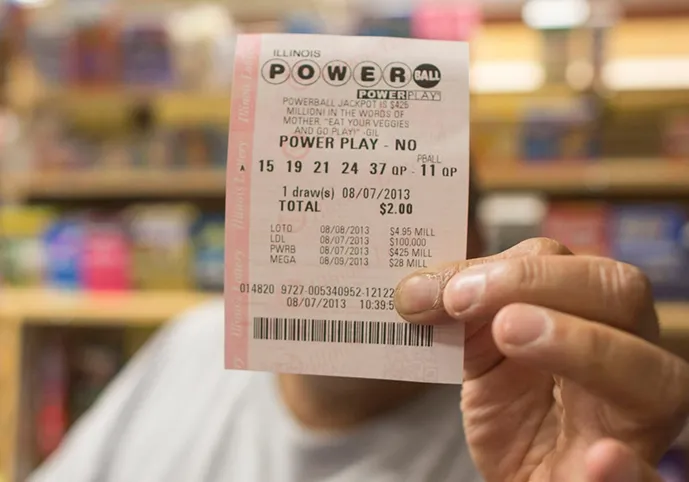Powerball is one of the most popular lottery games in the United States, captivating millions of players with the dream of winning life-changing sums of money. Its history is marked by significant changes and milestones that have shaped it into the game we know today.
Let’s explore the evolution of Powerball from its inception to its current status.
Origins: The Birth of Lotto America
Before Powerball, there was Lotto America. Launched in 1988, Lotto America was a multi-state lottery game that included 15 participating lotteries. The game allowed players to select five numbers from a set of 45, with drawings held twice a week.
While it offered substantial jackpots, the excitement was limited due to the smaller prize pools and limited participation.
The Transformation into Powerball
On April 19, 1992, Lotto America underwent a significant transformation and rebranded as Powerball. This change aimed to inject new excitement into the game and attract a broader audience.
The first Powerball drawing took place on April 22, 1992, with 15 participating lotteries: Delaware, Iowa, Idaho, Indiana, Kansas, Kentucky, Minnesota, Missouri, Montana, Oregon, Rhode Island, South Dakota, Washington D.C., Wisconsin, and West Virginia.
The initial format required players to choose five numbers from a set of 45 and a Powerball from a separate set of 45. The minimum jackpot for the first drawing was $5.9 million, with the next jackpot starting at $2 million.
This structure laid the foundation for what would become one of the most successful lottery games in history.
Expansion and Format Changes
As Powerball gained popularity, more states joined the game, leading to several format changes aimed at increasing excitement and jackpot sizes:
November 5, 1997: The number matrix changed to require players to select five numbers from 1 to 49 and a Powerball from 1 to 42. The minimum jackpot was increased to $10 million.
March 7, 2001: The Power Play option was introduced, allowing players to multiply non-jackpot prizes by up to five times for an additional $1 per game. This feature added a new layer of excitement for players.
October 9, 2002: The number of main balls increased to 53, and the Powerball pool expanded to 39 numbers. The minimum jackpot was raised to $15 million.
August 31, 2005: The main ball pool increased to 55 numbers, and the starting jackpot moved up to $15 million.
January 7, 2009: The matrix changed again, requiring players to select five main balls from 59 and a Powerball from 39 numbers. The minimum jackpot was increased to $20 million.
Significant Changes and Features
Powerball continued to evolve with several notable changes:
January 15, 2012: The price of a basic Powerball play doubled to $2, and the minimum jackpot increased to $40 million. The number of main balls remained at 59, but the Powerball pool decreased to 35 numbers. The Power Play feature was modified, and the 10x multiplier was introduced for draws with jackpots under $150 million.
October 4, 2015: The format changed again, with the main ball pool expanding to 69 numbers and the Powerball pool decreasing to 26 numbers. This change made the jackpot harder to win but increased the overall odds of winning any prize. The 10x Power Play multiplier was introduced for draws with jackpots under $150 million.
Record-Breaking Jackpots
The changes to Powerball’s format and structure led to some record-breaking jackpots:
January 13, 2016: The world’s largest lottery jackpot at the time, an annuity of approximately $1.586 billion, was split among three tickets from California, Florida, and Tennessee. Each winner received $528.8 million.
March 27, 2019: A single ticket purchased in Wisconsin won a $768.4 million jackpot, the largest single-ticket jackpot in Powerball history at that time.
November 8, 2022: A single ticket purchased in Altadena, California, won a $2.04 billion jackpot, the largest in U.S. lottery history. The winner, Edwin Castro, opted for a lump sum payment of $997.6 million.
October 11, 2023: A single ticket purchased in Frazier Park, California, won a $1.76 billion jackpot, the second-largest in U.S. lottery history.
Recent Developments
Powerball has continued to innovate and expand:
January 30, 2020: Mississippi joined Powerball, becoming the first new state to participate in over five years.
August 23, 2021: A third weekly draw was introduced on Mondays, and the Double Play feature was launched in 13 states, giving players more chances to win.
April 6, 2024: A Powerball player from Oregon won a jackpot of $1.32 billion, the largest prize in the state’s history.
July 14, 2024: A single ticket purchased in Los Angeles, California, won a $1.08 billion jackpot.
October 11, 2023: A single ticket purchased in Frazier Park, California, won a $1.76 billion jackpot, the second-largest in U.S. lottery history.
Conclusion
From its humble beginnings as Lotto America to its evolution into Powerball, the game has undergone numerous changes to enhance player experience and increase jackpot sizes. Its journey reflects the dynamic nature of the lottery industry and its ability to adapt to changing player preferences and market conditions.
Today, Powerball stands as a testament to innovation and excitement, continuing to captivate players with the allure of life-changing prizes.


